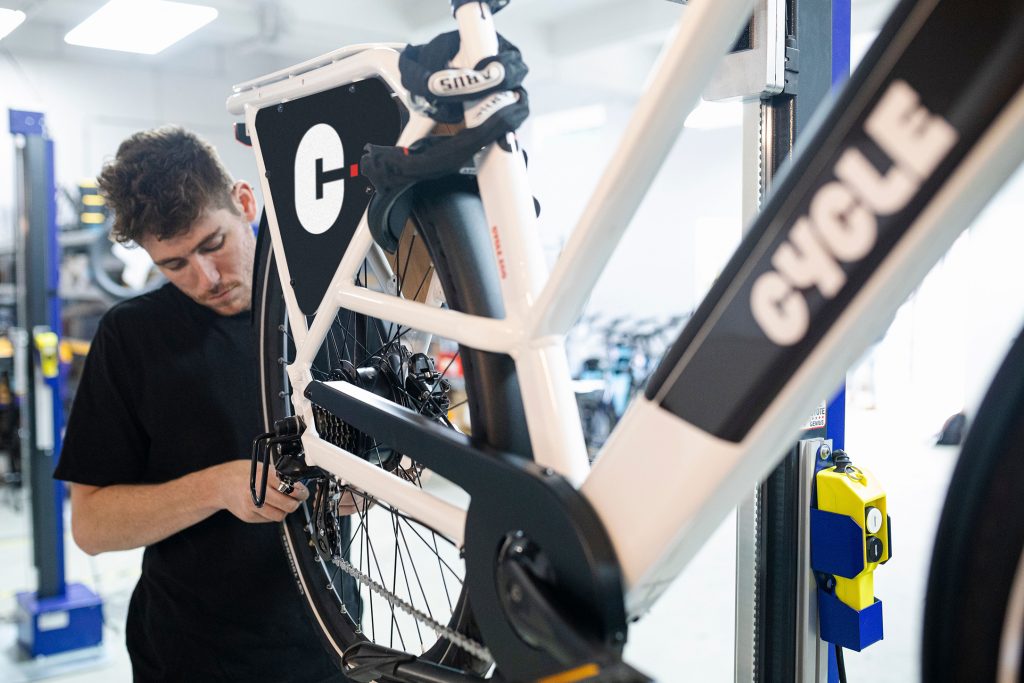The main goal of any business is the sale of goods or services. For a startup to grow and develop, it needs sales, so every entrepreneur must set their priorities and answer the following questions:
- How will the product or service be sold?
- What will be the sales strategy?
- What monetization scheme will be used?
- How will the interaction with consumers be carried out?
Once there is a strategy and an understanding of further action, the startup can grow rapidly, gaining a customer base, boosting sales, increasing turnover, and ultimately maximizing profits. Let’s try to understand this process of generating sales through lead generation. What are leads, and how to work with different types of leads? What channels and methods of lead generation exist and what factors influence it? How to calculate ROI from lead generation? In search of answers to these questions, Alexander Chetchikov, founder and CEO of World Future Awards, talked to Roman Shvets, an expert in lead generation and founder of the startup SalesAr.io.
Roman, first of all, I would like to ask a question for basic understanding for our entire audience: what is lead generation, and what is its importance for business in general?
Lead generation is essentially the process of finding and attracting potential customers for a business’s products or services. This process is fundamental for business growth and customer acquisition. It allows companies to be strategic, focusing their marketing efforts on individuals who are likely interested in what they offer, which improves conversion rates.
Basically, lead generation is the key to building trust with potential customers, driving sales, and ensuring sustained business success. It’s about making sure the right people know about you, trust you, and ultimately choose your product or service.
What is the difference between lead generation and attracting traffic to a website?
Great question. While both lead generation and attracting traffic to a website are critical parts of a marketing strategy, they serve distinct roles.
Attracting traffic to a website is about getting as many eyes on your content as possible. It’s about boosting the number of visitors to your website through various tactics like SEO, content marketing, social media marketing, and more. It’s essentially a numbers game – the more people you get to your website, the higher the chance of finding individuals interested in your product or service.
Lead generation, on the other hand, is a step further. It involves identifying and capturing the contact information of those potential customers who’ve shown an interest in your product or service. It’s about converting general website visitors into potential customers by providing value through content, forms, and calls to action.
So, while attracting traffic focuses on the quantity – getting large numbers of visitors to your site, lead generation is more about the quality – identifying and engaging with those who are more likely to become paying customers. Attracting traffic is a crucial first step, but lead generation is what turns that traffic into potential business revenue.
What are the main channels for lead generation?
When we talk about lead generation, we’re discussing a variety of avenues. Content marketing is a major player – we’re talking blogs, webinars, infographics, and anything that provides valuable, relevant content to our audience.
Then there’s the power of email. It’s not just about sending messages, it’s about nurturing relationships, keeping the conversation going, and moving potential customers closer to a purchase.
Social media is a fascinating space for lead generation, too. Platforms like LinkedIn, Facebook, and Instagram offer both organic and paid opportunities to connect with potential leads. It’s all about knowing where your audience hangs out and reaching them there.
And let’s not forget about good old search engine optimization. Being easily findable on Google or Bing can bring potential leads right to our doorstep.
Also, there’s pay-per-click advertising. It’s like a well-placed signpost on the digital highway, pointing people straight to our business.
Events, whether they’re held at some conference or an online meeting, offer chances to engage with potential leads face-to-face, which is invaluable.
Lastly, we have our landing pages – the digital welcome mat, if you will. They greet visitors, offer them something of value, and hopefully turn them into leads.
Of course, none of these elements work alone – it’s the interplay, the strategy, that ties them all together. Understanding our audience, crafting a compelling message, and fostering collaboration between our sales and marketing teams – that’s the magic recipe for lead generation.
Name a few factors for successful lead generation.
For successful lead generation, a few key factors come to mind.
Firstly, knowing your target audience is essential. You need to understand who you’re trying to reach, their needs, and how your product or service can fulfill those needs.
Secondly, you need to communicate the unique benefits of what you’re offering. Why should someone choose your product or service over the many other options out there? It’s crucial to articulate this value proposition clearly and compellingly.
Don’t underestimate the power of lead nurturing. Not all leads are ready to buy right away. Some need more time and information before they make a decision, and it’s your job to provide that through ongoing engagement.
Obviously, you want to use analytics to measure your success and make necessary adjustments. This involves testing different strategies, optimizing your efforts based on the results, and continuously refining your approach.
Lastly, shaping the sales funnel and tracking Key Performance Indicators can help identify bottlenecks and opportunities for improvement. Understanding where leads drop off and why can provide valuable insights to enhance your lead generation strategy.
With regard to online business, it is especially important to conduct a deep analysis and get a better understanding of the target audience, their psychological portrait, way of thinking, needs and objections for lead generation to bring customers to the business. How do you make sure you’re getting only relevant customers?
You’re absolutely right about the importance of a deep understanding of your target audience for successful lead generation. To ensure you’re attracting and retaining only relevant customers, you need to carefully shape and manage your sales funnel with a keen focus on data.
Attracting relevant customers is about understanding your audience’s journey and crafting targeted content that speaks to them at each stage. Using KPIs like conversion rates and lead quality can help you assess the effectiveness of your efforts. Tools like marketing automation can streamline this process and provide valuable data. Regular testing and optimization based on this data is crucial.
Also, it’s important to keep your cost per lead low, maximizing your return on investment. There’s no one-size-fits-all in lead generation. A tailored, data-informed strategy unique to your business and audience is key.
Is the sales funnel a key indicator in lead generation? How do you properly shape the sales funnel, and what are the key KPIs that influence it?
Yes, the sales funnel is a critical part of lead generation. It maps out the customer’s journey, from the first point of contact with your brand to the final purchase. Each stage of the funnel requires different strategies and content to effectively guide the potential customer through.
Key KPIs that influence the sales funnel include conversion rates, which show you how many leads move from one stage to another, and lead quality, indicating how likely a lead is to become a customer.
Customer retention is also a crucial KPI. Retaining customers not only improves your profitability but also makes your sales funnel more efficient, as existing customers often have a shorter journey.
Marketing automation tools can help you streamline and refine your sales funnel. These tools can automate repetitive tasks, segment your leads for more personalized content, and provide data for continuous testing and optimization.
Lastly, keeping an eye on the cost per lead is vital. This KPI tells you how cost-effective your lead generation efforts are. By analyzing and optimizing your funnel, you can lower your cost per lead, reduce overall marketing costs, and improve the efficiency of your sales funnel.
How does cost per lead (CPL) affect the business model? What should be done to lower the CPL?
Cost per lead directly impacts your business model because it represents how cost-effective your lead generation efforts are. A high CPL might indicate that your marketing strategies are not efficient and could strain your budget, affecting your overall profitability.
Lowering CPL isn’t an overnight task. It requires a strategic approach that includes thorough research and planning. The goal is to differentiate your company and create content that genuinely appeals to your target customers’ needs.
Personalizing your communication with your leads can significantly impact CPL. Building relationships and guiding leads through the funnel with personalized offers can make your efforts more efficient.
It’s crucial to set realistic timelines, monitor performance, and make data-driven adjustments for sustainable success. Always measuring and analyzing KPIs will help you identify areas where you can reduce costs and improve efficiency, thereby lowering your CPL over time.
There is a term in the expert community – the automated sales funnel. Is it possible to build one, or is this just a legend?
Building an automated sales funnel is not only possible, it’s highly recommended. Each step must be designed to guide a potential customer through the buyer journey, from first contact to final purchase, with minimal manual effort. This could involve sending automated emails at certain trigger points, segmenting leads based on their behavior, and delivering personalized content.
Key tools in this process can include Customer Relationship Management software and Marketing Automation Tools. They can help manage contacts, track interactions, automate emails, and provide valuable insights for optimization.
An important point I should make – automation doesn’t mean ‘set and forget’. Continuous analysis, testing of strategies, and collaboration between sales and marketing teams are essential to ensure the automated funnel is effective and leads to genuine, profitable customer relationships.
What are the main mistakes made by companies that are just starting the lead generation process?
Companies that decide to try out lead generation often fail to set clear goals, resulting in a directionless strategy. They might not fully understand their target audience, making it hard to create compelling messages.
They also often overlook articulating what sets them apart, the value they bring to customers. Content might not be engaging enough, failing to draw people in.
Website optimization can be neglected, leading to lost leads due to poor user experience. Lead capture forms might not be used effectively, missing crucial information gathering.
Some companies fail to use a mix of marketing channels, limiting their reach. Also, neglecting automation tools can make lead nurturing inefficient.
Finally, the importance of regular analysis and sales-marketing collaboration can be overlooked, hindering strategy refinement and smooth conversions.
It’s all about trial and error at the end of the day and learning from your mistakes.
What recommendations do you have for our readers on how they can improve lead generation in their companies?
I can go on for a while here, so I’ll try to keep it short and sweet.
Define your lead generation goals. Clear objectives guide your strategies and measure your progress.
Understand your target audience. Knowing your audience helps in creating messages that resonate with them.
Articulate your unique value proposition. Make sure potential customers understand why your offering stands out in the market.
Create valuable, engaging content. Good content attracts potential leads and encourages them to interact with your brand.
Optimize your website and lead capture forms. A smooth user experience can increase lead conversions.
Utilize a mix of marketing channels. Diversification helps reach your audience wherever they are most comfortable.
Streamline lead nurturing with automation. Automation tools can ensure timely, personalized interactions.
Last but certainly not least. Regularly analyze performance. Data-driven decisions are crucial for continual improvement.
What innovative solutions and tools exist on the market that help to set up an effective lead generation process?
I won’t name the specific services and applications we use, but I will share some details on what they help us achieve.
The first and obvious choice for any company seeking to start generating leads is CRM Software. These tools manage and analyze customer interactions, enhancing relationships and driving sales growth.
Next, I would list Marketing Automation Tools. They automate repetitive tasks, personalize communication, and effectively nurture leads.
You need Analytics Tools to track website traffic, monitor user behavior, and measure the effectiveness of various marketing strategies.
Social Media Management Tools to manage and monitor social media channels, enabling effective audience engagement.
SEO to optimize your website for search engines, making your business more discoverable and attracting quality leads.
Also worth mentioning are Lead Capture Tools, which provide features like pop-up forms that help convert website visitors into leads.
Let’s imagine a company that is concerned about launching the process of lead generation. Where should they start, and how should they go about developing this area?
It all starts with setting clear and measurable goals and then working on every step that will get you there.
Get to know your audience. Understand their needs, behaviors, and pain points to create buyer personas. This insight is essential for developing a unique value proposition that differentiates your offerings and resonates with your target audience.
Next, build quality content that adds value, educates, and addresses your audience’s problems. It’s equally important to optimize your website for user-friendliness and lead generation. This involves creating effective landing pages and incorporating lead capture mechanisms like forms, pop-ups, and gated content to entice visitors to share their information.
In terms of marketing channels, using a mix that aligns with your audience is essential. This could include social media, email marketing, content marketing, and a variety of other channels. I highly recommend using marketing automation tools to simplify and streamline your lead nurturing efforts.
Constantly test, measure, and optimize your strategies based on performance. And don’t forget to align your sales and marketing teams to ensure a smooth customer journey and maximize lead conversions.
What I learned is that there is no one ultimate solution, plan, or blueprint that works for everything. Lead generation is a process of continuous learning and refinement, so be adaptable and willing to evolve based on your data and feedback.
What is the difference between in-house lead generation in a company and outsourcing this process, and is it worth outsourcing?
I would say that choosing between in-house lead generation and outsourcing depends on your company’s specific needs, resources, and expertise.
In-house lead generation allows full control over the process, with direct involvement in strategy and execution. The in-house teams have a deeper understanding of the company’s services and products, which can lead to a more customized approach. However, this requires significant resource investment, including hiring and training staff and purchasing necessary tools and technology. There might also be gaps in expertise, and executing an effective strategy can be time-consuming.
Alternatively, outsourcing lead generation to external experts can bring specialized knowledge and experience. It will likely be even more cost-effective, as you can save on recruitment, training, and tech costs. Plus, outsourcing provides flexibility and allows your internal team to focus on their core competencies and responsibilities. However, you’ll have less direct control, and ensuring smooth communication between your company and the service provider might take extra effort.
What are the advantages of an external vendor compared with the in-house lead generation department?
External vendors can offer various advantages. They tend to bring specialized expertise and knowledge of industry trends, and they are likely to have access to advanced tools and technologies that can enhance effectiveness and efficiency.
Outsourcing can also be cost-effective as it saves on expenses related to hiring and maintaining an in-house team. It provides flexibility, allowing companies to adjust the level of service based on their needs. External vendors can also execute campaigns faster due to their focus and streamlined processes, thus reducing time-to-market.
Even better, they can introduce fresh ideas and innovative strategies, and more often than not, they bring performance accountability, as performance metrics and KPIs are often established in the contract.
How does one choose the proper contractor in the case of outsourcing the lead generation? What are the key points to pay attention to? How should one correctly brief and evaluate the selected company?
Choosing the right lead generation contractor can be a headache. First, define your requirements, goals, and expectations to identify contractors with relevant capabilities.
Research potential contractors, considering their reputation and experience. Evaluate their expertise and services, focusing on those that align with your needs.
Effective communication and collaboration are also important. Assess the contractor’s responsiveness and their ability to align with your company culture.
Request detailed proposals, including their strategies, deliverables, and pricing. Conduct interviews, asking about their processes and client references. Once you select a contractor, provide a comprehensive brief and establish KPIs and reporting schedules.
Also, don’t forget to monitor and evaluate the contractor’s performance regularly. Open communication, feedback, and a collaborative relationship will ensure successful outcomes.
What is lead management, and how should one organize it correctly?
Lead management is like being a tour guide for your potential customers. You start by grabbing their attention and gathering information about them. This could be done through online forms, chatbots, or special content.
Next, you gauge who’s just browsing and who’s really interested – that’s lead qualification. For the interested ones, you start building a relationship through emails, webinars, or tailored content – that’s lead nurturing.
Not all leads are the same, so you tailor your approach to their interests. You identify who’s ready to buy with lead scoring and focus your efforts there.
Sales and marketing teams work together in this journey, using the info gathered to have meaningful conversations with leads and turn their interest into purchases. And, of course, you keep checking how well you’re doing and look for improvements.
And finally, Roman, please share your opinion on the prospects for the development of lead generation. How do you think this process will look in the future?
Well, I’d say the future is definitely digital, more personal, and driven by data and technology.
Advancements in AI, machine learning, and automation are going to play a big part. These technologies will make lead gen more targeted, personalized, and efficient. We’ll be able to understand our leads better, score them more accurately, and nurture them more effectively. Honestly though, with the way AI is advancing, there’s no way to predict where things will go, especially if you factor in exponential growth, but that’s a different topic.
The way we collect and use data will be crucial. We’ll use data to gain deep insights into our target audience, deliver highly relevant experiences, and keep refining our strategies. But we’ll also need to be super careful about data privacy and ensure we’re fully compliant with all regulations.
Our approach will be multi-channel, meaning we’ll use various digital channels to reach our leads, and customer-centric, focusing on their needs and expectations. The sales and marketing teams will need to work together closely to create a seamless journey for the lead.
Basically, the future of lead gen won’t be much different than what it is right now – delivering personalized experiences, leveraging data and technology, and constantly optimizing our strategies. I think the major difference will be the tools and data at everyone’s disposal, but the methods will generally remain the same. One thing is for certain – the future is a fascinating place.







